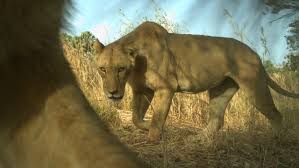In some ways, recent discoveries should have been made long ago. Asiatic lions historic distribution stretched across Asia, north Africa, and Southern Europe.
Given that the Barbary Lions historic range covered the central part of this huge area, it seems reasonable that the Barbary lion and the Asiatic lion should be closely related. Yet it was only in the last few years that genetic evidence has been shown that this is indeed the case.

This is exciting for several reasons. If the Northern African Lion, the West African Lion and the Asiatic Lion are the same subspecies, then we have a far larger population with greater genetic variability to draw from in order to save the species. There is also far more countries to look at, in finding areas for reserves. The west African lion currently numbers about 400 wild members, and the Asiatic lion population numbers about 600.
If we think of this population as 1000 Asiatic lions (it is possible that this name needs changing as roughly half is not in Asia, and there is far more possible habitat in North and West Africa than there is in Asia.
By translocating members of each population across, we can increase genetic variability, a significant issue in places like the Gir forest. This could greatly increase survival of young in both places. Furthermore, by translocating young lions out, we would greatly reduce mortality levels of lions killing lions.
In 50 years, we could go from only a couple of viable lion populations to 20 or more. Countries like Iran, and the Arabian peninsular, as well as places like Azerbaijan (though extinction here was longer ago) in Asia, and in Africa Senegal Burkina Faso, Niger Nigeria and Benin all either have very small relict population which could be increased, or only lost the lion in living memory.
It is entirely conceivable that in just 50 years, the Asiatic Lion might outnumber the African lion (though I would hope that we could make progress in the conservation of the African lion as well). This is not only good for the Lion; as apex predators, the Lions return could be the catalyst to restore ecosystems across north Africa, and large areas of Asia. My fear is that we will continue to bumble along as we are, and that in 50 years the Asiatic Lion population will be as perilous as it currently is in many place – but with the tiny populations that currently exist having long disappeared.











